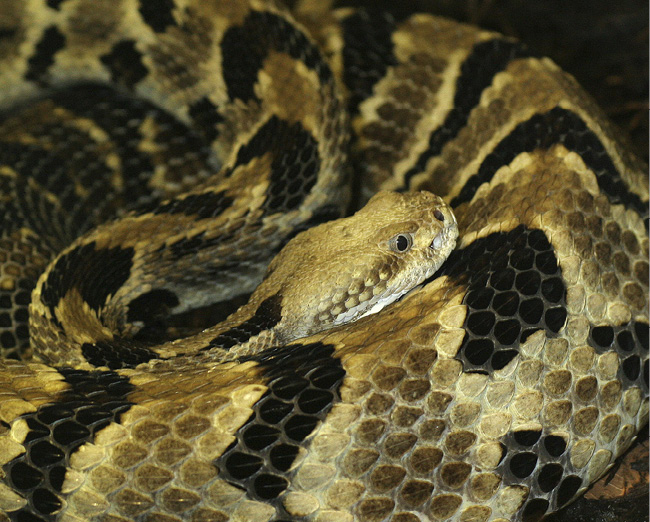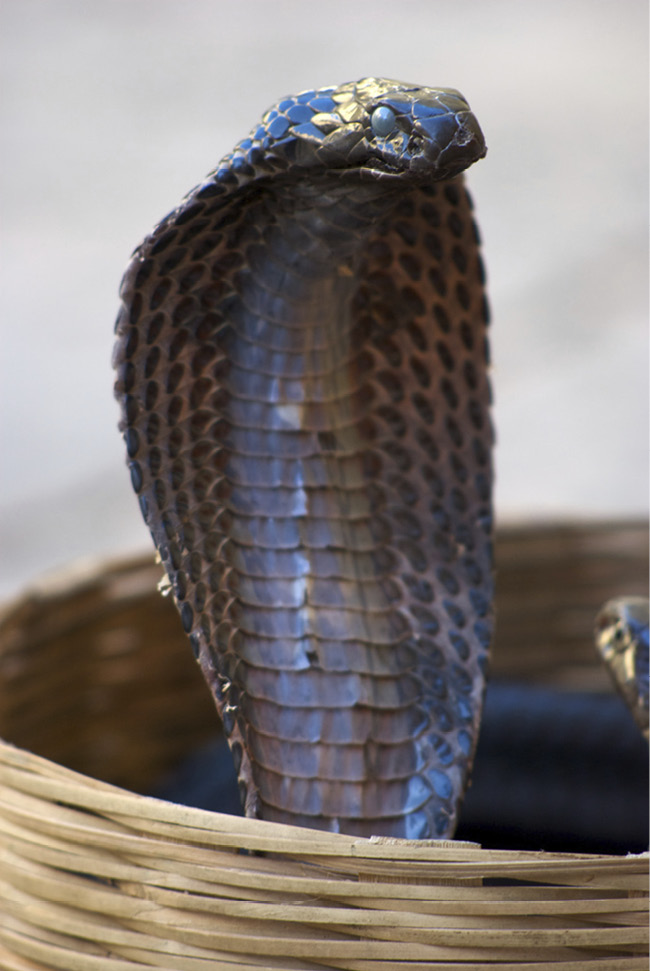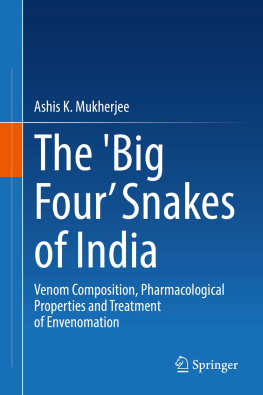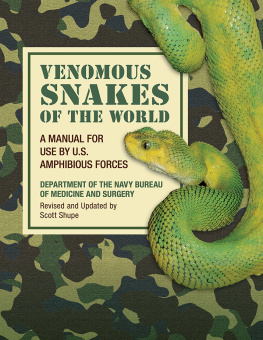Title Page
101 AMAZING FACTS ABOUT SNAKES
Jack Goldstein
Publisher Information
Published in 2014 by
Andrews UK Limited
www.andrewsuk.com
The right of Jack Goldstein to be identified as the author of this work has been asserted by him in accordance with the Copyright, Designs and Patents Act 1998
Copyright 2014 Jack Goldstein
All rights reserved. No part of this publication may be reproduced, stored in a retrieval system, or transmitted, in any form or by any means without the prior written permission of the publisher, nor be otherwise circulated in any form of binding or cover other than that in which it is published and without a similar condition being imposed on the subsequent purchaser. Any person who does so may be liable to criminal prosecution and civil claims for damages.
All facts contained within this book have been researched from reputable sources. If any information is found to be false, please contact the publishers, who will be happy to make corrections for future editions.
Cover photograph courtesy of H Krisp
Horned Viper photograph also courtesy of H Krisp
Timber rattlesnake photograph courtesy of Tad Arensmeier
Indian cobra photograph courtesy of Kevin Jones
Boa constrictor photograph courtesy of Christian Mehlfhrer
Anaconda photograph courtesy of Dave Lovesdale
Introduction
How often does a snake shed its skin? What is the worlds most venomous species? What incredible ability are rattlesnakes currently evolving? And why are scientists studying the venom of the black mamba? All of these questions and more are answered in this fascinating eBook containing over one hundred facts, separated into sections for easy reference. So if you want to know why should still handle a dead rattlesnake with care, or which place on earth contains the highest number of deadly snakes per square metre, then this is the book for you!
Follow Jack Goldstein on Twitter @GoldsteinBooks
Visit Goldstein Books at www.jackgoldsteinbooks.com
The Basics
- Snakes are a legless reptiles belonging to a suborder with the Latin name serpentes .
- They are different to legless lizards that - unlike snakes - have eyelids and external ears.
- A common feature of all snakes is that their bodies are covered in overlapping scales.
- The suborder of Serpentes is further separated into two orders; these are alethinophidia and scolecophidia .
- The majority of snakes are alethinophidia, with the distinguishing characteristic of scolecophidia being that all species within the order are blind.
- There are fifteen families of alethinophidia; these are file snakes, coral pipe snakes, dwarf pipe snakes, Asian pipe snakes, boas, dwarf boas, Round Island boas, colubrids, elapidae, shield-tailed & short-tailed snakes, sunbeam snakes, vipers (including pit vipers) & rattlesnakes, mole vipers, Mexican burrowing snakes and finally pythons.
- It is thought that there are over three thousand species of snake to be found on the planet.
- Snakes are found on every continent on earth except Antarctica.
- There are snakes inhabiting almost every large island on the planet; the two notable exceptions are New Zealand and Ireland.
- Most snakes are non-venomous, either swallowing their prey alive or squeezing it to death first; however there are some snakes whose venom is powerful enough to kill humans.

A Timber Rattlesnake
Biology
- Snakes are cold-blooded, which means you will generally find them in warm areas.
- The majority of snakes - around 70% - hatch from eggs. The rest in fact give birth to living young.
- The paired organs of snakes (such as their kidneys) are positioned in their bodies one behind the other, rather than side-by-side as they are in humans.
- Most snakes only have one lung.
- Generally snakes have very poor eyesight and rely on their other senses for everything from hunting and finding a mate to avoiding predators.
- Snakes do have ears, but amazingly they are inside their heads!
- It could be said that snakes smell the air with their tongues; they have extremely sensitive receptors which can detect prey from a great distance.
- Some snakes are able to unlock their jaws, enabling them to swallow prey that is much larger than their own heads.
- Snakes shed their skin multiple times every year; the process of doing this usually takes a few days.
- A snakes eyes will usually turn milky just before they shed their skin. This is because their eyes are in fact also covered by scales that are shed - these are clear and called spectacle scales.

An Indian Cobra
General Facts
- Snakes have a number of predators, including birds, mongooses, foxes, coyotes, boars and even other snakes.
- Those who keep snakes say that cobras are the most intelligent of all species, and can quickly learn to tell the difference between their owners and other people!
- The biggest threat to snakes today is humans; we kill them for their skin or out of fear, and we are responsible for destroying the habitats in which many of them live. Sadly there are many species that it is unlikely we will ever discover much about, as they will probably become extinct before we have had the chance to study them.
- Whereas some snakes leave their eggs after laying them, the female python will coil up around the eggs she has laid and vibrate her body to keep them warm until they hatch.
- The most common place to be bitten by a snake is of course on the leg - as this is usually the most exposed piece of your flesh that is close to the ground.
- In captivity, some species of snake can live over fifty years. We have found it difficult to determine how long snakes in the wild can live for, but it is thought that some species can live even longer than this.
- Biologically, snakes do in fact comprise of a head, body and tail - although it is generally difficult to determine where one part starts and another ends from just looking at a specimen.
- There are only four species of snake native to the United Kingdom; these are the Aesculapian snake, the smooth snake, the grass snake and the adder. Of these, only the adder - a type of viper - is poisonous, although attacks on humans are extremely rare.
- A snakes scales are made of keratin - the same material that makes up your hair and fingernails.
- It is thought that between twenty and one hundred thousand people die every year from snake bites, with the majority of these happening in Asia and sub-Saharan Africa.

A Boa Constrictor
Species
- A species of sea-dwelling serpent called the tentacle snake is fascinating for two reasons. Firstly it has two tentacles in front of its mouth which allow it to detect movement in the water. Secondly, it is the only known snake to anticipate the movement of its prey - it angles its head in a certain way prior to attacking, knowing that the fish on which it feeds will react by swimming in that direction.
- The cantil snake has a bright yellow tip on its tail that makes it look like a worm. This lures in potential prey, which the snake then lunges at when it is close enough.
- Rattlesnakes have rattles at the end of their tales which they shake to ward off predators. Although they generally hunt small animals such as mice and birds, they are known to commonly bite humans when threatened. The rattle is in fact made from around ten layers of scales that dont shed when the rest of its skin does.
Next page










